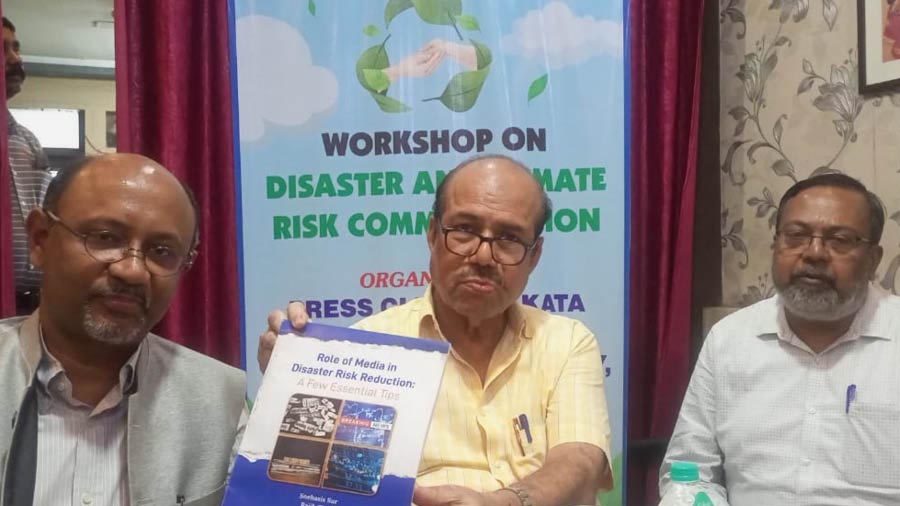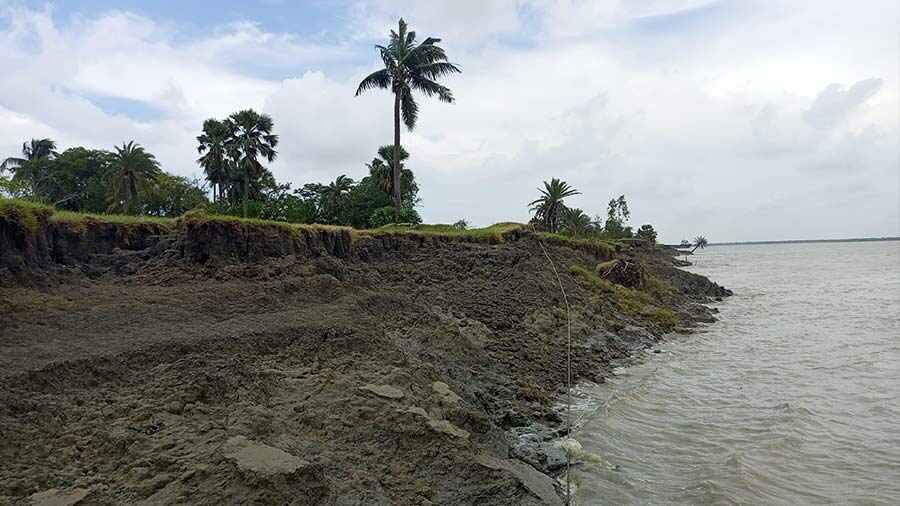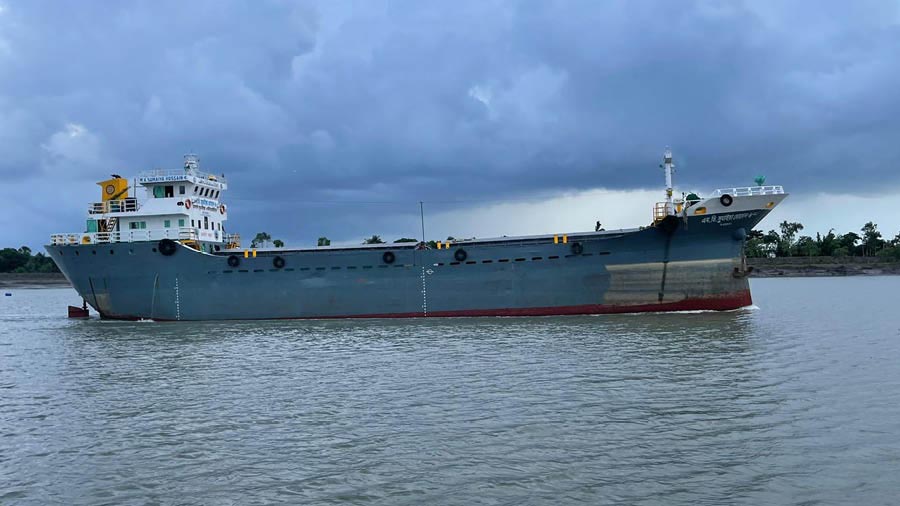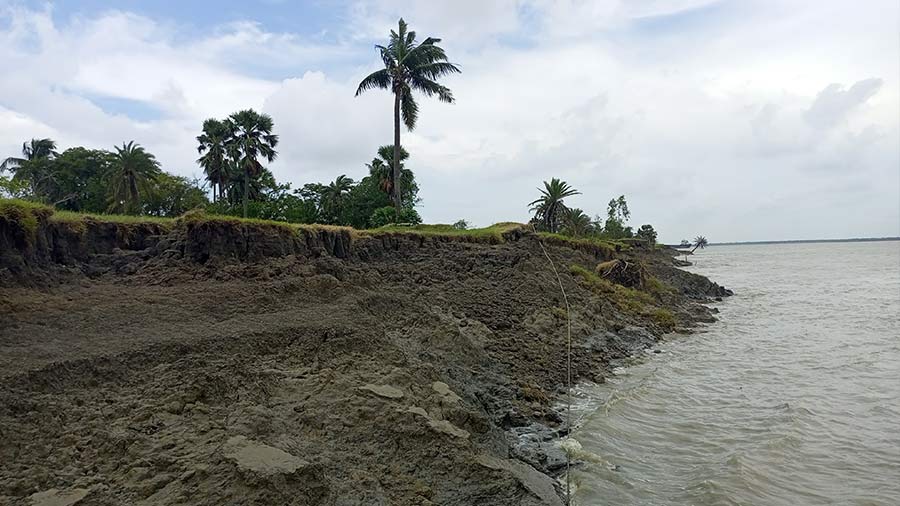Barges ferrying fly ash from India to Bangladesh that regularly travel through the Sunderbans are impacting the river banks and eroding the island, West Bengal disaster management minister Javed Khan has alleged.
The fly ash is used in the cement factories of Bangladesh. Around 40 vessels ply daily through the Sunderbans waters, according to the Inland Waterways Authority of India (IWAI), the Union government’s agency that regulates the transboundary barge movement.
“I visited the Sunderbans recently, along with senior officials of my department and green experts, to take stock of the situation and were informed by the locals that the continuous movement of barges ferrying fly ash from West Bengal to Bangladesh is affecting the banks and triggering erosion. We plan to take up the matter with the central government agencies,” Khan said at a workshop held at the Kolkata Press Club on disaster and climate risk communication.
The workshop was organised by Press Club, Kolkata, and India Japan Laboratory under Keio University, Japan. A document titled “Role of media in disaster risk reduction” was released by Khan along with professor Rajib Shaw of Keio University and Snehasis Sur, president, Press Club, Kolkata.

Disaster Management minister Javed Khan flanked by Rajib Shaw (on his right) from Keio University, Japan, and Snehasis Sur, president, Kolkata Press Club The Plurals News Network
Locals claim barge role; regulatory officials oppose
Local residents of the Sunderbans have blamed increased erosion on barges that are now travelling closer to the inhabited islands than about a decade back. “These barges are triggering erosion,” Amal Mandal, a resident of Pakhiralay island, told The Plurals on Sunday, pointing to a barge passing by close to a sprawling zilla parishad house that stands dangerously poised and all set to be engulfed by the river in near future as the adjoining river bank has eroded significantly in the last few years.
Earlier, the barges used to travel through channels closer to the core forest. But complaints that they were damaging the pristine mangroves and wildlife habitat, particularly through the release of toxic effluents, led to a change of route.
“On an average about 40 barges travel through the Sunderbans daily, carrying mainly fly ash from India to Bangladesh. We have no evidence to suggest that the waves generated by these barges affect the banks or cause erosion,” said Arvind Kumar, director IWAI.
A senior IWAI official clarified that the waves created by barges affect the water level till a depth of 0.5m at the most; this is further minimised as the waves approach the bank. “As erosion normally occurs at a depth of three to four metres; the waves created by the barges have no role in bank erosion; those usually ply about 200m away from the bank,” added the official.
Senior officials of both IWAI and Kolkata Port Trust claimed that the regular tidal waves and fluctuations, as well as strong winds, damage the banks. “If barge movement was responsible, there would not be erosion of river banks close where there is no barge movement; but we find erosion in many such places,” an official said.

Senior officials of both IWAI and Kolkata Port Trust claimed that the regular tidal waves and fluctuations, as well as strong winds, damage the banks TT Archives
Experts hold barges responsible for erosion
A senior official of the state irrigation department claimed that barges do play a role in erosion, albeit indirectly. “A major part of the route of these barges, from points close to Kolkata where they collect fly ash via Namkhana and Gosaba, now travel close to the inhabited island as the deep channels are located there. We do not know how much the waves created by the barges directly affect the banks; but they definitely play an important role indirectly in the process as they hamper siltation by disturbing the water course frequently.”
“The damage is greater when these navigational channels are dredged,” added the official.
“These barges and larger ships affect the banks and trigger erosion,” said Sugata Hazra, a Sunderbans expert from the oceanography department of Jadavpur University. He added that the tidal effects are generally highest at a depth of 0.5m, which opens up the possibility of the peak tidal waves and barge generated ones adding to each other.
Hazra cited the example of Ghoramara island in the western Sunderbans, which is sinking. “When the barges travel from the western side of Ghoramara, the region gets eroded; however, since the barges are travelling from the north and eastern sides of the island, these sides are now getting eroded,” pointed out the expert.
“We do not know what the experts say, but as per our ground-level experience, these Bangladeshi barges are definitely playing a key role in the island erosion,” Sanjib Sagar, erstwhile pradhan of Ghoramara panchayat, told The Plurals some time back.
“These barges often don’t have an Indian pilot in Indian waters, though that is mandatory. This leads to navigational problems and the barges tend to come closer to the banks, leading to erosion,” Hazra said.

A fisherman’s boat on the water at Sunderbans. Fishermen in the area also complained that often the barges go close to the banks and, in the process, damage the fishing nets.
Fishermen in the area also complained that often the barges go close to the banks and, in the process, damage the fishing nets.
“Most of the barges carrying fly ash to Bangladesh travel close to the banks and damage the nets set up by fishermen of the region. In 2022, and also this year, we filed complaints with the district magistrate and the Kolkata Port Trust; but the problem continues,” said Milan Das, secretary of a fishery association, Dakshin Banga Motsojibi Forum (DMF), to The Plurals on Tuesday.
Earlier, in response to a petition filed by DMF, the National Green Tribunal (NGT) had called for an alternative route through the Bay of Bengal for the Bangladeshi barges.

